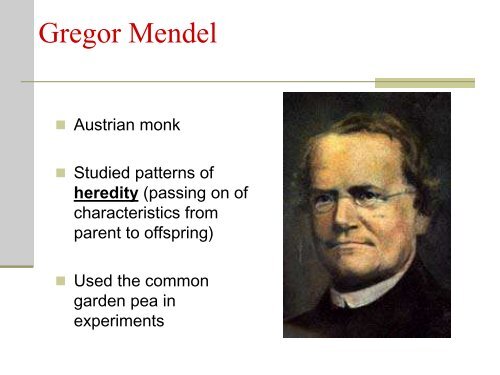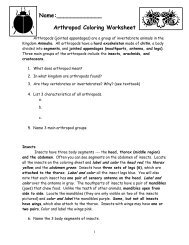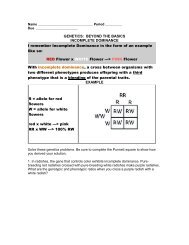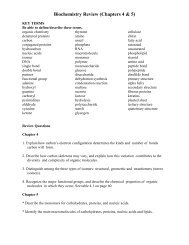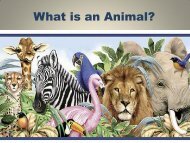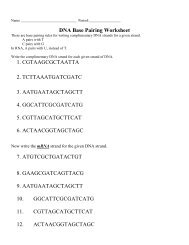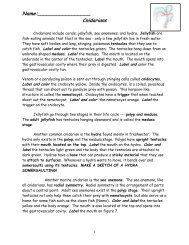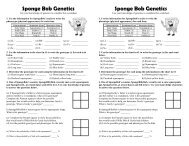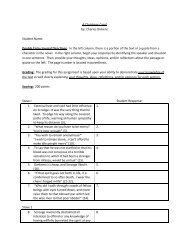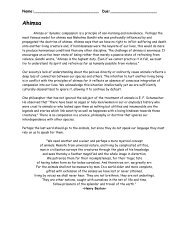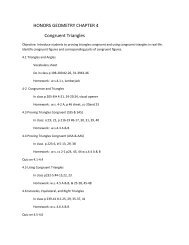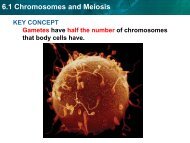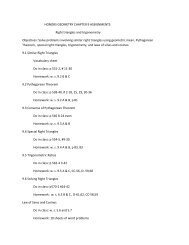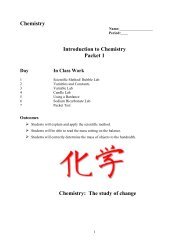Gregor Mendel
Gregor Mendel
Gregor Mendel
You also want an ePaper? Increase the reach of your titles
YUMPU automatically turns print PDFs into web optimized ePapers that Google loves.
<strong>Gregor</strong> <strong>Mendel</strong>• Austrian monk• Studied patterns ofheredity (passing on ofcharacteristics fromparent to offspring)• Used the commongarden pea inexperiments
Why did <strong>Mendel</strong> use peas?• Sexually reproducing:able to isolate bothmale and femalegametes• Easy to identify traits(characteristics that areinherited)• Short life cycle: able tobe grown quickly
6.3 <strong>Mendel</strong> and Heredity<strong>Mendel</strong>’s data revealed patterns of inheritance.• <strong>Mendel</strong> made three key decisions in his experiments.– use of purebred plants– control over breeding– observation of seven“either-or” traits
4Generation “Gap”Parental P 1 Generation = the parentalgeneration in a breeding experiment.F 1 generation = the first-generationoffspring in a breeding experiment. (1stfilial generation)From breeding individuals from the P 1generationF 2 generation = the second-generationoffspring in a breeding experiment.(2nd filial generation)From breeding individuals from the F 1generation
6.3 <strong>Mendel</strong> and Heredity• <strong>Mendel</strong> used pollen to fertilize selected pea plants.– P generation crossed to produce F 1 generation– interrupted the self-pollination process by removing maleflower parts<strong>Mendel</strong> controlled thefertilization of his pea plantsby removing the male parts,or stamens.He then fertilized the femalepart, or pistil, with pollen froma different pea plant.
6.3 <strong>Mendel</strong> and Heredity• <strong>Mendel</strong> allowed the resulting plants to self-pollinate.– Among the F 1 generation, all plants had purple flowers– F 1 plants are all heterozygous– Among the F 2 generation, some plants had purpleflowers and some had white
6.3 <strong>Mendel</strong> and Heredity• <strong>Mendel</strong> drew three important conclusions.– Traits are inherited as discrete units.– Organisms inherit two copies of each gene, one fromeach parent.– The two copies segregateduring gamete formation.– The last two conclusions arecalled the law of segregation.purplewhite
6.3 <strong>Mendel</strong> and HeredityWord RootsKnowing word roots can improveyour vocabulary!• haplo- = single (haploid: cellsthat contain only onechromosome of eachhomologous pair)• homo- = like (homologous: likechromosomes that form a pair)


